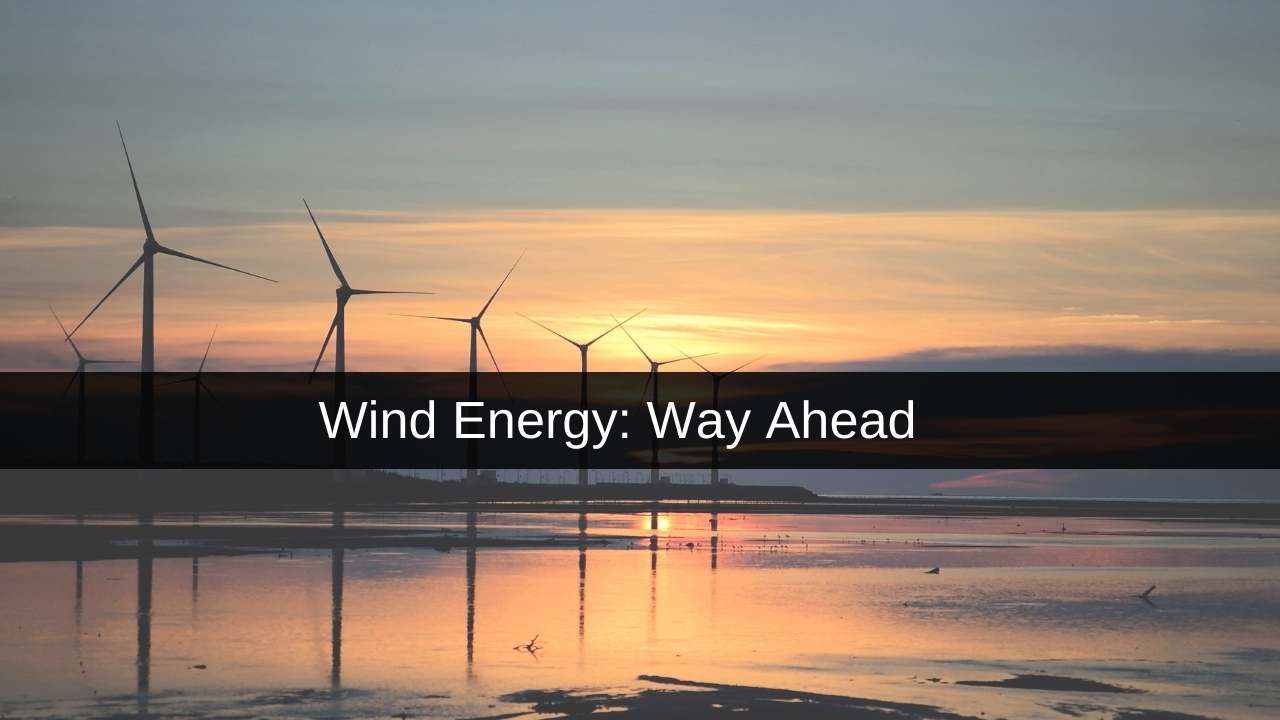Market Prediction For Tomorrow 27 March 2025
Wind Energy: Way Ahead

With the rising focus on Renewable energy, Wind power generation capacity in India has significantly increased in recent years. As of 30 May 2022, the total installed wind power capacity was 40.53 GW, the fourth largest installed wind power capacity in the world.
Growth in the wind segment was impacted severely after the removal of two key incentives (generation-based incentives and feed-in tariff-based PPA). Furthermore, with the introduction of competitive tariffs, the sector has been less lucrative largely due to highly volatile wind velocity, which has impacted wind generation in the past few years.
Further, low tariffs from competitors and limited site availability in the two key states of Gujarat and Tamil Nadu, as well as power curtailment and payment delays by some of the state discoms, deterred activity in the segment.
Another important thing to note is that the Wind energy segment has underperformed in generation growth despite capacity additions. This is largely due to the impact of seasonal volatility, which has lowered wind velocity across the country and thus impacted wind generation and the desired level of returns from these projects.
However, the sector has witnessed improved tendering activity in FY22 compared to FY21 levels, largely led by a very intense competition across the solar space (resulting in low IRRs) and also due to rising tendering activity across the hybrid structure (solar + wind), which provides more stable power flow to the grid (RTC route), compared to the plain vanilla solar or wind projects. The year FY22 also witnessed a record low tariff of Rs.2.34/kWh for the SECI IV Hybrid tender.
C&I segment also favors the hybrid structure as it supplies RTC power and players like CleanMax, Fourth partner and Amplus are playing a noticeable role in the segment.
In March 2021, SECI’s auction for developing 1.2 GW of ISTS-connected wind projects (Tranche X) witnessed Adani Renewable Energy winning 300 MW of wind projects at the L1 tariff of Rs.2.77/kWh. Also, Ayana Renewable Power won 300 MW, Evergreen Power won 150 MW, and JSW Future Energy won 450 MW, at a tariff of Rs.2.78/kWh each. JSW had placed bids for 600 MW but was awarded only 450 MW under the bucket filling method. The auction had received bids for a total of 3.15 GW of projects from 11 developers with tariffs as high as Rs.3.39/kWh.
On the wind EPC front as well, GE Renewable energy has been doing much better compared to its other peers like Inox Wind, Suzlon, Gamesa, and Vestas. GE Renewable won fresh orders from CleanMax, Continuum Green Energy, and JSW Energy.
With a large focus on hybrid structure, going ahead, wind will play a secondary role in the country’s decarbonization effort (after solar) which would lead to more tendering and ordering activity across the sector in the coming decade.
Wind-solar hybrids (WSH) tenders to gain more traction than the plain vanilla one which fails to meet the peak power demand. While the plain solar or wind tenders have attained a price parity with coal-based plants and provided discoms a cheap source for power, they cannot replace conventional sources in meeting peak power demand. Also, standalone solar and wind projects often witness variability in power generation, which leads to grid instability. These intermittency issues associated with solar and wind power generation, alongside a few hours of availability, pose problems in grid integration and failure in meeting peak power demand without storage support. Thus, in order to overcome these issues and ensure better utilization of these resources, there is an emerging interest in WSH, which cannot only improve grid stability but also provide RTC power. Other forms of hybrid tenders have also been explored by bundling renewable generation with other balancing sources such as thermal power and BESS.
Until date, more than 15 GW of WSH and RTC capacity has been tendered, of which more than 12.5 GW has been allocated. Of this 7.5 GW is expected to come online by 2023.
Government Policy Support:
- In 2018, MNRE released the National Wind-Solar Hybrid policy, which provides a framework for the promotion of large-scale WSH projects. It stated that WSH projects can be used as captive plants, third-party sales through open access, and sales to discoms under LT PPA through competitive bidding.
- In addition, the states of Gujarat and Andhra Pradesh came out with state-level policies for WSH in 2018, followed by Rajasthan in 2019. Further, in order to enhance the overall output from WSH along with storage facilities, the MNRE issued guidelines for procurement of WSH through a transparent TBCB process in October 2020.
- Later, this guideline was amended in August 2021, to address the issues to implement the large hybrid projects and encourage investment by allowing discoms to directly procure power from these project developers. The move is aimed to lower the power procurement cost from these WSH projects by omitting the trading margins charged by intermediaries like SECI and other state nodal agencies.
Since 2018, SECI has tendered five tranches of the interstate transmission system (ISTS)-connected WSH projects, of which four have been concluded. The tariffs discovered for the first two tranches ranged from Rs.2.67-2.69/kWh. The tariffs have since been falling, with the lowest discovered rate for tranche III being Rs.2.42/kWh and the recently concluded auction for tranche IV resulting in a new low of Rs.2.34/kWh.
The fifth and most recent tranche of 1,200 MW was issued in October 2021 which witnessed a tariff of Rs.2.53/kWh.
Further, SECI has been coming out with other innovative hybrid tenders as well, a 1,200 MW tender introduced in August 2019 for WSH projects with storage support to supply peak power and another one in March 2020 for 2,500 MW of ISTS-connected blended wind power projects with a wind component of at least 80%. Other state agencies and utilities like Adani Electricity, Tata Power, and Maharashtra State Electricity Distribution Company Ltd (MSEDCL) have also come up with hybrid tenders.
While the cost of hybrid projects is still relatively high, it escalates further with the bundling of thermal power or with the inclusion of storage components. This would require higher levels of tariffs for developers to cover up the costs.
However, with the advancement in PV technology (which would enhance capacity utilization) and the expected fall in battery cost, going ahead, hybrid projects will become more viable and reliable renewable power. Such a mix could be an apt solution for ensuring the power grid’s stability and meeting peak power demand.
- Performance Analysis
- Nifty Predictions
- Market Trends
- Insights on Market
Trending on 5paisa
Market Outlook Related Articles
Disclaimer: Investment in securities market are subject to market risks, read all the related documents carefully before investing. For detailed disclaimer please Click here.

 5paisa Research Team
5paisa Research Team




